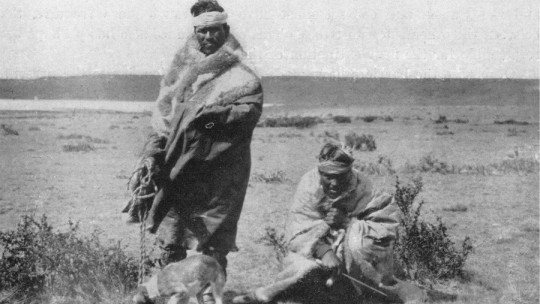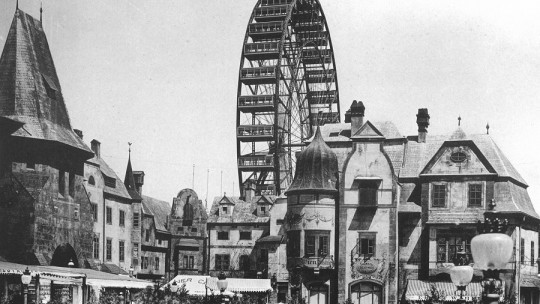
Like any science, the study of history must follow specific phases, which will guarantee the correct development of our thesis.
Each and every phase of the historical research method is important In this article we present what these development phases are, as well as some useful tips to make your work as professional as possible.
How to apply the historical research method?
Below, you will find 7 essential points that correspond to the different phases that the historical research process must follow.
1. Concretion of a hypothesis
The first phase of any scientific investigation is the establishment of a hypothesis. What idea do we want to investigate? For example, a hypothesis regarding history could be: the survival of classical culture in medieval art.
Based on this hypothesis, a series of related questions arise: did the ways of creating classical art survive in the medieval world? If so, where and how does this influence appear? And, what is more important: was there really a break between the classical and medieval worlds? Is it just a simple replica of models, or is there a knowledge base of classical culture when creating these works?

We already have the hypothesis established (did the ways of performing classical art survive in the medieval world?). Secondary ideas hang from this hypothesis, which are the ones that we have been listing and that are related to this main hypothesis. These secondary ideas will serve as support when developing our research, since they will be established as coordinates to delimit the process.
An important point in this first step is to delimit the research topic as much as possible. The more specific the topic is, the easier it will be for us to handle the information, and we will also be able to achieve a greater degree of depth into the issue. Therefore, it is much better if the initial hypothesis is: survival of the classical modes in the medieval doorway of the Ripoll monastery.
The second important point to take into account is the degree of involvement that we can offer. That is to say; If the object of our research is in the United States, and we do not have the financial means or time to travel there, it will be frankly difficult for us to complete the work satisfactorily. Therefore, in the process of establishing the hypothesis, we must take into account not only our personal or professional interests, but also the real possibilities of carrying out the research.
2. State of the art: what is the existing bibliography on the topic?
Once we have defined the topic we want to develop, it is time to investigate the existing bibliography To do this we will have to do a bibliographical analysis of all the authors who have dealt with the topic. What do we understand by bibliographical emptying? It is the creation of a list of existing works and, subsequently, the reading and analysis of them. This will give us an idea of the status of the matter, that is, at what point the investigations are. In this way, we have a starting point to develop our own thesis.
3. Consultation of sources: primary sources and secondary sources
The third step is to go to the sources. These can be primary or secondary. Let’s briefly stop at what each of them is.
3.1. Primary sources
They are direct testimonies that will give us information about the event we are investigating. That is to say, contemporary sources of the time subject to investigation An example of a primary source related to the thesis that we have discussed in point 1 would be the reliefs on the monastery’s façade, as well as, if they exist, the contracts of the different artists who worked on it.
It is important to emphasize that not all sources are written; As we have pointed out before, an image or an archaeological remains can also provide us with information.
3.2. Secondary sources
Are sources that are not contemporary to the time we study ; for example, books on the subject, documentaries, archaeological studies, etc. It is essential for the research work that, whenever we are faced with a secondary source where a document contemporary with the object of the research is transcribed, we must go to the original document, that is, the primary source. This step is very important because, sometimes, whether consciously or unconsciously, the text in question may have been modified.
4. Work structuring
Good development implies prior structuring. Once we have all the information collected and verified, the next step is to script it To do this, we must be clear about which ideas are important and which are secondary. It is also important to avoid reiterating information, as well as getting lost in details that distract us from the central objective of the thesis.
5. Writing the thesis
Once the state of the matter and the sources have been analyzed, and after having scripted the work, it is time to write. In this point You must take into account the language to be used, which will depend on the type of work being carried out A doctoral thesis is not the same as a popular science article, or another article aimed at the general public. Of course, in the latter case, the language used must be clear and concise and we must avoid overly technical concepts, although they must always correctly express the idea we wish to convey. Likewise, the length of our work will also depend on the audience it is aimed at.
In the writing we have to argue which aspects of our hypothesis have been confirmed by the sources consulted; and, if there are aspects that do not coincide with the initial approach, we will have to add the new idea and also cite the source from which we extracted it.
6. Preparation of conclusions
Once our thesis has been written, we will have to draw up some conclusions that will summarize the entire research process, as well as the results obtained. In these conclusions we must include, first of all, What is the main contribution of our research in addition to our recommendations for future work on the topic.
7. Bibliography
It is essential in any scientific research work to include the bibliography consulted, as well as cite the sources we have consulted. If our work contains quotes, we will have to indicate their source.








